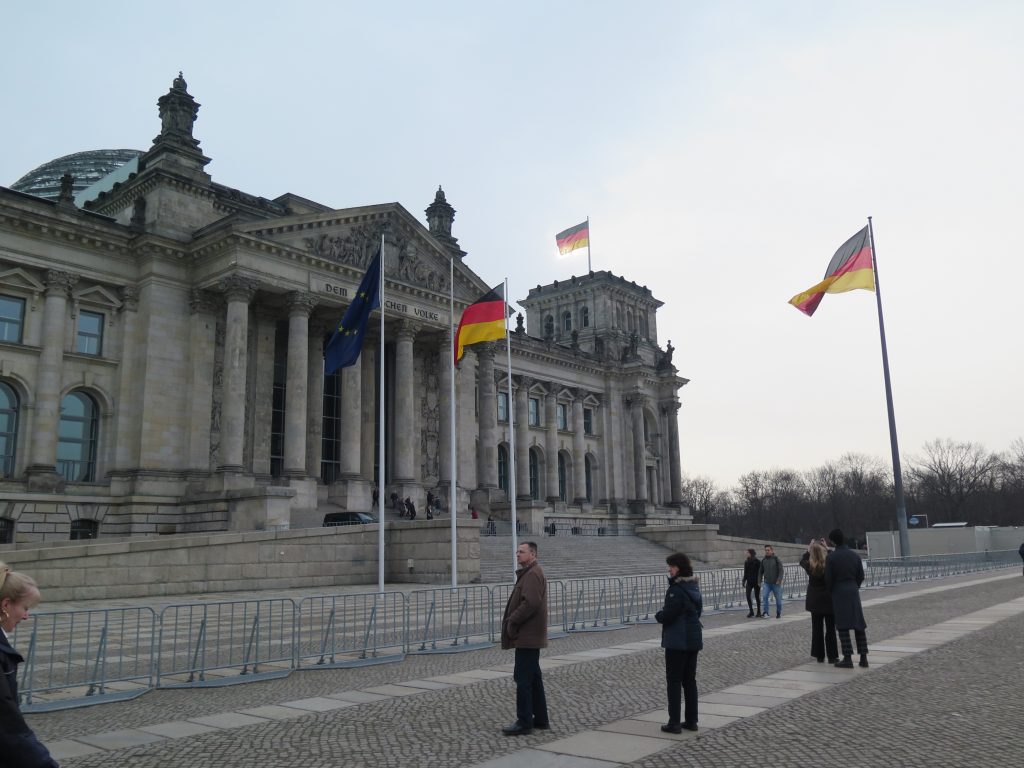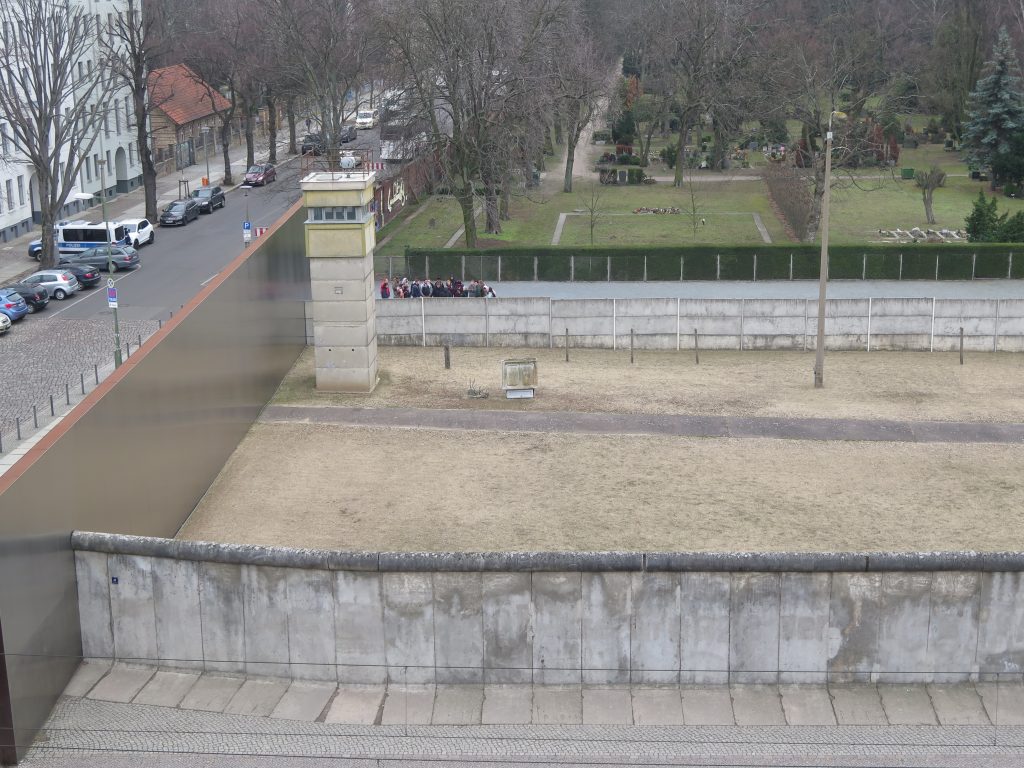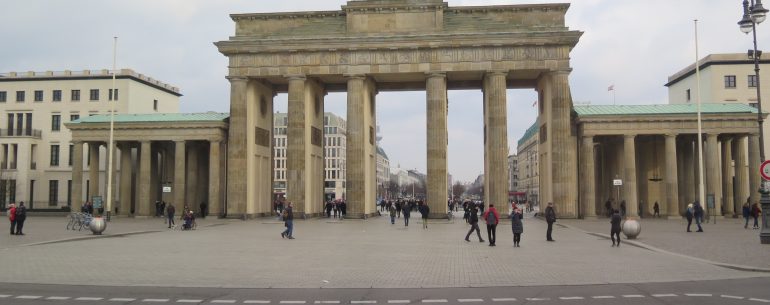If ever there was a city which made the case for not building a wall, then that city is Berlin. Today we had a full day in Berlin and they laid on a city tour for us. A prompt start at 9am meant that we had time to head all round the city. We stopped initially at the Reichstag. With the establishment of the German Reich in 1871, the Reichstag building was completed in 1894. The building housed the Reichstag (the “Imperial Diet”) until February 27th 1933 when the building mysteriously burnt down under suspicion circumstances. It is widely thought that this was orchestrated by the Nazis to turn their opponents against them and enable them to seize power – a strategy which clearly worked!

From there we toured around the city seeing various landmarks and the stopped again at the Berlin Wall memorial up by Nordbahnhof. Here they have rebuilt a section of the wall complete with watchtower and the well-named “death strip” – the section between the inner and outer wall patrolled by East German guards. With mass migration talking place from East to West Germany, the East Germans decided (with the support of the Russians) to try and prevent the brain drain which was taking place by preventing anyone from leaving the GDR. The GDR State Chairman Walter Ulbricht ordered the building of the wall which divided communities overnight and left many families separated. Into total the wall was 96.3 miles long and had 302 watchtowers. The first death from someone trying to cross was when a woman jumped from the 2nd floor (the windows on the first two had been bricked up) to try to get into West Germany and died in the attempt. The next death was someone who tried to swim across the river and was shot. In total it is thought that over 140 people died.

Over 5,000 people did successfully emigrate to West Germany during the time of the wall (please note Donald Trump!!) and the most creative of these was in an MG which was adapted so that the roof would come off when it hit the barrier. The East Germans lay flat in the car and kept driving – they made it ….
We then continued onto Museum Island and walked around the outside of the museums and the cathedral before heading for lunch at a nice restaurant on the banks of the River Spree. After lunch we went to the Berlin Wall panorama by the artist Yadegar Asisi who specialises in this type of almost photo-realistic art. The panorama takes up around 270 degrees of the circular building and is very evocative. The museum is right by Checkpoint Charlie and the panorama shows an Autumn day in Kreuzberg in the 1980s. Kreuzberg was quite an alternative area of the city with artists, musicians and other creating a cultural hub. It was also a home for many immigrant workers as rents tended to be lower close to the wall.
All in all a fascinating overview of a rapidly changing city. This was well illustrated by a photo which the guide had showing a house standing on its own in Potsdamer Platz in 1990. The house is now dwarfed by shopping malls, office buildings and hotels!

For some photos of the day, see below:
